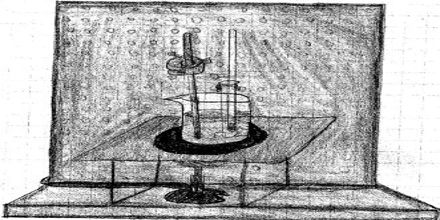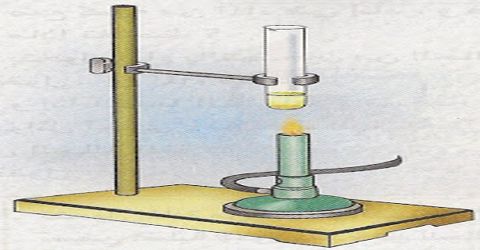Determining the melting point of a solid compound is one way to test if the material is pure. A pure material usually has a melting range (the difference between the temperature where the sample starts to melt and the temperature where melting is complete) of one or two degrees.
Required Accessories: 1 beaker, wax, thermometer, test tube, sprit lamps etc.
Procedure: Take some small pieces of wax in the test tube. Taking water in the beaker and keep it on the sprit lamp, immerse the test tube and thermometer in the water of the beaker so that none of them touches the bottom or wall of the beaker with the help of a stand (as shown in the figure). Apply heat to the bottom of the beaker with the help of the spirit lamp.
Notice the thermometer reading and the wax in the test tube. Is the temperance of the thermometer increasing? Is there any change of the use of the wax? Observe carefully the condition of the wax, when the temperature of the thermometer reaches nearly 57 degree Celsius.

Analysis: Is the wax melting? When the wax starts to melt, notice the temperature in the thermometer. What is the reading of this temperature? Is it 57 degree Celsius? Then 57 degree Celsius is the melting point of wax. The boiling point of paraffin wax is between 370 degrees Celsius. In Fahrenheit, that would be between 117 degrees Fahrenheit and 147 degrees Fahrenheit. This high boiling point makes wax suitable for several purposes, including paraffin wax treatments, beauty treatments, lip and hand moisturizers, candles and other applications.
So (at standard pressure) the temperature at which a solid begins to melt is known as its melting point. Like wax, each solid has its melting point. Example: Aluminum 1218 C, Copper 1084 Celsius; Lead 327.5 C, Magnesium 650 C etc.














